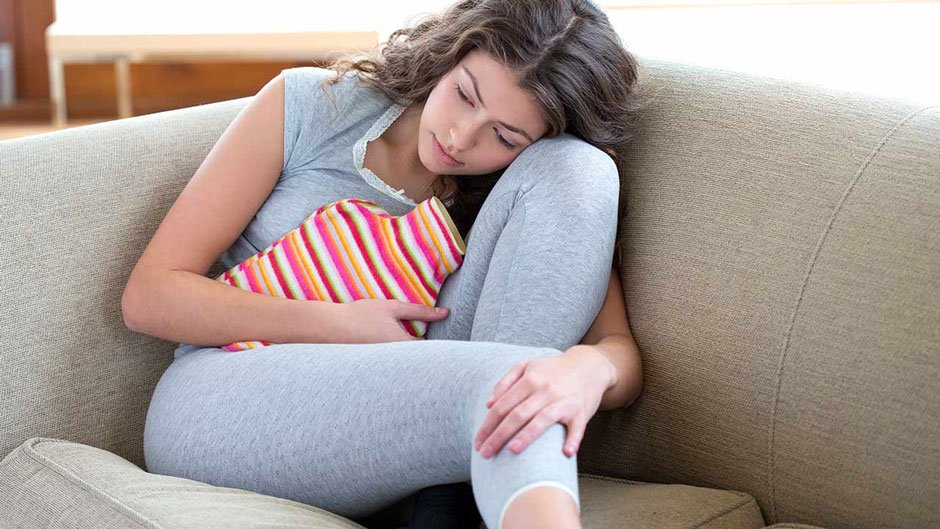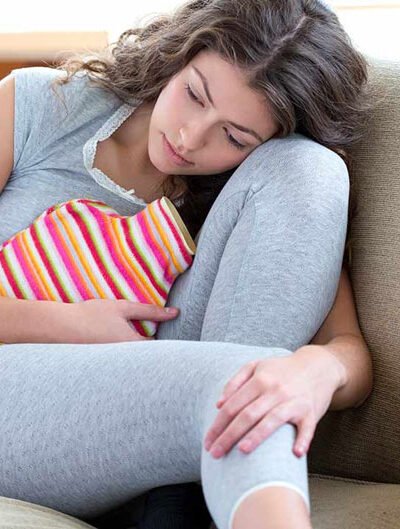 When a teenage daughter curls up on the couch clutching her stomach, most parents assume it’s just “that time of the month.” After all, minor aches and cramping are part of the journey into womanhood.
When a teenage daughter curls up on the couch clutching her stomach, most parents assume it’s just “that time of the month.” After all, minor aches and cramping are part of the journey into womanhood.
But what if the pain isn’t tied to a normal cycle? As someone who’s watched my niece wrestle with unexplained abdominal pain, I’ve learned that there’s a fine line between harmless discomfort and a symptom worth investigating.
Understanding the many causes of pelvic pain in adolescent girls, ranging from benign ovulation twinges to rarer conditions like ovarian torsion, can help families respond calmly and effectively.
Common Causes of Lower‑Abdominal Pain in Teens
Pelvic or abdominal pain can come from many sources. Some are tied to the reproductive system; others have nothing to do with hormones. Knowing the difference can ease worry and help get the right care sooner.
The Usual Suspects: Ovulation and Cramps
Not every cramp signals trouble. About 40% of women experience a brief twinge during ovulation, known in German as Mittelschmerz (“middle pain”). It’s often a dull ache or sharp pinch on one side of the lower abdomen and usually fades quickly. Menstrual cramps are even more common, causing throbbing or cramping just before or during a period. While discomfort can range from mild to intense, it often improves with a heating pad or over-the-counter (OTC) pain relief.
Gastrointestinal and Musculoskeletal Causes
Pelvic pain isn’t always reproductive-related. Over-exercise can strain abdominal muscles, and digestive issues like constipation or gas may cause bloating and discomfort. Urinary tract or bladder infections can also trigger pelvic pain along with frequent urination, cloudy urine, or fever. In more serious cases, appendicitis brings sudden, severe pain—often with nausea, vomiting, and fever—and needs immediate medical attention.
When the Ovary Is the Source
Sometimes the pain starts in the ovary. During the menstrual cycle, it forms a fluid-filled sac called a follicle. After releasing an egg, the follicle usually shrinks and disappears. When it fails to rupture or dissolve properly, a fluid-filled pocket called an Ovarian cyst can form. According to specialists at Nationwide Children’s Hospital, most functional cysts are a normal part of ovulation and usually resolve on their own—often without symptoms.
Larger cysts, however, may cause irregular periods, pelvic pain, bloating, or a sense of fullness in the lower abdomen. They can press on nearby organs, leading to frequent urination or constipation. A ruptured cyst can bring sudden, severe pain. In rare cases, the ovary may twist around its supporting ligaments, a condition called ovarian torsion, which causes intense pain, nausea, and requires emergency care.
Signs You Shouldn’t Ignore
Trust your instincts; if the pain feels different from your teen’s usual cycle, note when it happens and any other symptoms. Seek medical advice if you notice:
- Persistent or severe pain:Sharp pain that doesn’t fade, disrupts sleep, or limits daily activities.
- Unusual bleeding or cycle changes:Extremely heavy bleeding outside her period or sudden shifts in timing.
- Digestive or urinary changes:Bloating, constipation, or frequent urination alongside pelvic pain, which may point to a larger cyst.
- Fever, vomiting, dizziness, or faintness:Especially if sudden and intense—these can signal a ruptured cyst, ovarian torsion, or appendicitis.
Nationwide Children’s Hospital advises calling a doctor for ongoing pain, redness, or drainage after surgery, or a fever above 38.3 °C. For severe pain, heavy bleeding, or symptoms like vomiting and dizziness, emergency care is essential.
At‑Home Comfort Measures
While you’re monitoring symptoms, there are gentle ways to ease minor pelvic pain:
- Heat therapy.A warm bath or heating pad can soothe menstrual cramps or mild ovulation pain. Nationwide Children’s Hospital notes that heat is often recommended for cyst‑related discomfort.
- Over‑the‑counter relief.Medications such as acetaminophen or ibuprofen can relieve pain. Always follow dosing instructions and consult your doctor about what is appropriate for your teen.
- Encourage hydration and rest.Sometimes dehydration or exhaustion intensifies cramps. Drinking plenty of water and resting may help.
- Track her cycle and symptoms.Keep a simple journal of when pain occurs, where it’s located, and any associated signs like bloating or fever. Patterns can help clinicians pinpoint the cause.
If the discomfort is associated with a known small cyst, doctors often suggest waiting one or two cycles to see if it resolves. Limiting intense activity may also reduce the risk of torsion.
Working With Healthcare Providers
A clinician will usually start with a detailed history and physical exam, including a pelvic check for swelling or tenderness. Blood tests or imaging—like ultrasound, MRI, or CT scans—may follow to identify cysts or other issues.
Treatment depends on the cyst’s size, type, and symptoms. Options range from watchful waiting to hormonal medication that prevents new cysts. Surgery may be necessary for large cysts, torsion repair, or recurring pain, and urgent intervention is critical for ruptures or torsion. Many cysts, however, are a normal part of ovulation and resolve without treatment—something doctors often reassure families about.
Final Thoughts
Teen abdominal pain can be worrying, but most causes—from ovulation to minor digestive problems—are temporary. Even an ovarian cyst often clears on its own. The key is spotting unusual patterns, keeping the conversation open, and seeking care when needed. Understanding the possibilities helps you respond calmly, offer the right support, and encourage your daughter to trust and speak up about her health.





Leave a Reply